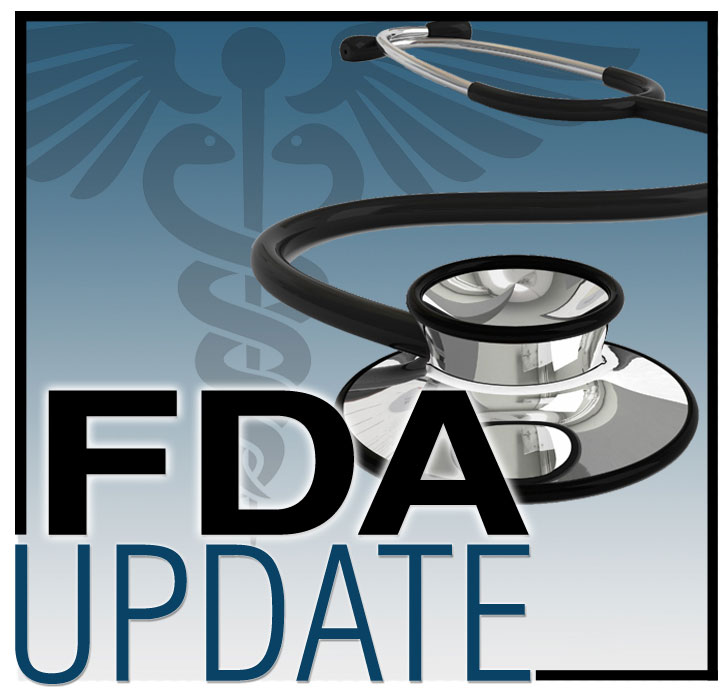FDA Approves Mitomycin for Low-Grade, Upper-Tract Urothelial Cancer
On April 15, 2020, the U.S. Food and Drug Administration (FDA) approved mitomycin (https://www.fda.gov/drugs/resources-information-approved-drugs/fda-approves-mitomycin-low-grade-upper-tract-urothelial-cancer) (Jelmyto®) for the treatment of adult patients with low-grade, upper-tract urothelial cancer (LG-UTUC).

Efficacy determination was based on an ongoing, single-arm, multicenter trial (OLYMPUS; NCT02793128) enrolling 71 patients with treatment-naïve or recurrent noninvasive LG-UTUC with at least one measurable papillary tumor located above the ureteropelvic junction. Patients who had larger tumors could have had prior tumor debulking. Patients received mitomycin (4 mg/ml instillations weekly via ureteral catheter or nephrostomy tube) for six weeks. For Patients with a complete response (CR) at three months received monthly instillations for a maximum of 11 additional doses.
The major efficacy outcome measures were CR and CR durability. CR was defined as complete absence of tumor lesions three months after mitomycin initiation and was assessed by urine cytology and ureteroscopy. If warranted, a biopsy was performed. Forty-one patients (58%) achieved a CR three months following treatment initiation and were continued in follow-up; 29 patients received at least one dose of maintenance therapy.
Durability of response in those with CRs was evaluated at 3, 6, 9, and 12 months following the CR determination. Seven patients had documented recurrences and 19 patients remained in CR at 12 months following CR determination. The median response duration had not been reached (range = 0–18.8+ months).
The most common adverse reactions (≥ 20%) were ureteric obstruction, flank pain, urinary tract infection, hematuria, renal dysfunction, fatigue, nausea, abdominal pain, dysuria, and vomiting. Ureteric obstruction occurred in 58% of those receiving mitomycin and required ureteral stent placement in 88%.
The recommended mitomycin dose is 4 mg/ml instilled via ureteral catheter or nephrostomy tube, with total instillation volume not exceeding 15 ml (60 mg mitomycin) based on volumetric measurements using pyelography.
This review used the voluntary Assessment Aid (https://www.fda.gov/about-fda/oncology-center-excellence/assessment-aid) submission process to facilitate FDA’s assessment.
The application was granted priority review and breakthrough therapy designation. A description of FDA-expedited programs is in the Guidance for Industry: Expedited Programs for Serious Conditions-Drugs and Biologics.
Healthcare professionals should report all serious adverse events suspected to be associated with the use of any medicine or device to FDA’s MedWatch Reporting System (https://www.accessdata.fda.gov/scripts/medwatch/index.cfm)or by calling 800-FDA-1088.
For assistance with single-patient oncology investigational new drug applications, healthcare professionals may contact OCE’s Project Facilitate (https://www.fda.gov/about-fda/oncology-center-excellence/project-facilitate)at 240-402-0004 or email OncProjectFacilitate@fda.hhs.gov (mailto:OncProjectFacilitate@fda.hhs.gov).
